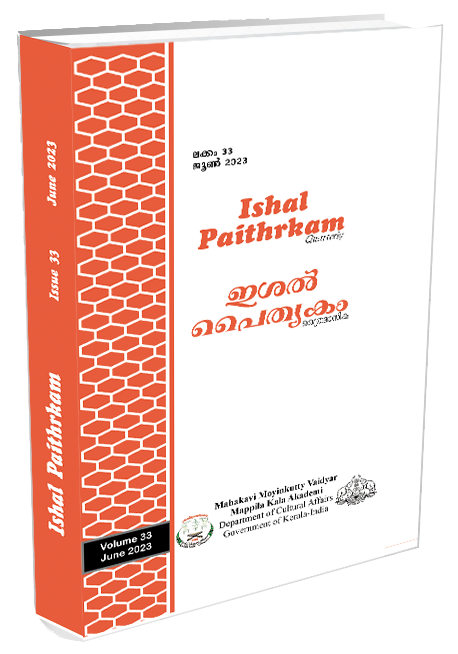Transcending Gender Boundaries: A Mapping of the Alternative Masculinities of Lord Krishna
Keywords:
myth, iconography, alternative masculinity, divine masculinity, redemptive masculinityAbstract
Myths provide opportunity for a fundamental enquiry into the human condition being collective psyche of the Indian society which sustains its belief system and governs its way of life. Lord Krishna, the dark enigmatic mythical god who is closely associated with romance, love and eroticism remains a paradox in Indian ethics, politics, dharma and sexuality. An incarnation of Lord Vishnu, Lord Krishna exhibits the female traits of the former and is not a strictly masculine figure in the socio-religious and cultural space of the nation. This paper attempts to investigate the non-hesitative gender-fluid nature enshrined in Krishna and aims to study how the epic resists the hegemonic notion of masculinity, opening up an arena of alternative masculinities, especially redemptive masculinity. It also inspects the reconceptualization of the image of Krishna and its changing iconography in popular culture, with special focus on identity politics.
Downloads
References
Anand, S. (2014, July 21). The Hindu Gods Seem to Have Been Working Out. World Hindu News. (P. Deivamuthu, Ed.) Mumbai, Maharastra, India: World Hindu News.
Bhowmik, S. (2018, Septebmer 3). When ‘rockstar’ Krishna inspired the fantasy fiction world. The Times of India. (A. Tandon, Ed.) New Delhi, Delhi, India: Time of India.
Castelli, E. (2001). Women, Gender, Religion: Troubling Categories and Transforming Knowledge. In E. Castelli, E. Castelli, & R. Rodman (Eds.), Women, Gender, Religion: A Reader (pp. 3-25). New York, USA: Macmillan.
Chitando, E., & Chirongoma, S. (2012). Introduction. (C. Ezra, & S. Chirongoma, Eds.) Geneva, Switzerland: World Council of Churches Publications.
Chitgopekar, N. (2022). Invoking Goddesses: Gendered Politics in Indian Religion. New Delhi: Shakti Books.
Doniger, W. (1980). Women, Androgynes, and Other Mythical Beasts. Chicago: University of Chicago Press.
Hawthorne, S. M. (2017). Masculinities and the Male God. In S. M. Hawthorne, Gender: God (pp. 17-30). USA: Macmillan Reference USA.
Jain, K. (2001). Muscularity and its Ramifications: Mimetic male bodies in Indian mass culture. South Asia-Journal of South Asian Studies, 24, 197-224.
Mirwky, S. (1996). Men and the Promise of Goddess Spirituality: Reflections along the Way. In M. Longwood, & M. W. Muesse, Redeeming Men: Religion and Masculinities (pp. 197-208). Louisville: Westminister Press.
Mishra, S. (2020). Gender Conundrum in Cross-Dressing: Bombay Cinema of Humour or Layering. Unpublished Dissertation. Delhi, Delhi, India: Delhi Univesity.
Morrieson, G. (2010). 18 Days. New Jersey: dynamic forces inc.
Pai, A. (1970). Krishna. Mumbai: Amar Chitra Katha Private Limited.
Pattankaik, J. D. (2010). Jaya: An illustrated Retelling of the Mahabharata. Delhi: Penguin Books.
Sahgal, N. S. (2017). Alternative Mechanism to Lineage Perpetuation in Early India: A Socio-Historical Enquiry. Delhi: Primus Books.
Singh, A. (2012). Krishna: A Journey within. Delhi: Image Comics.
Downloads
Published
Issue
Section
License
Copyright (c) 2025 ISHAL PAITHRKAM

This work is licensed under a Creative Commons Attribution-NoDerivatives 4.0 International License.

